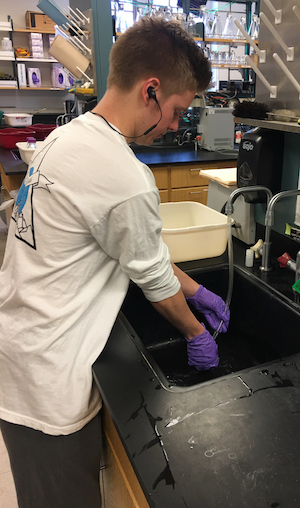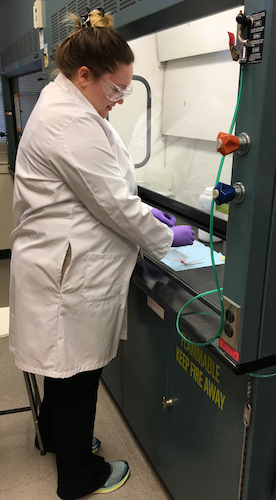IsoLab undergraduate lab experience
IsoLab employs undergraduate students interested in gaining laboratory and research experiences. Undergraduates are crucial to the success of IsoLab. IsoLab hires students early in their study, provides a competitive salary, and retains students until graduation. Interested undergraduates at the University of Washington are encouraged to contact the lab manager or the lab Principal Investigators and provide a resumé and summary of interest. Undergraduate students are valued and supported by IsoLab for their diligence and hard work that results in improved techniques and greater productivity.


IsoLab prepares undergraduates with training in safety, communication, collaboration, experimental design and laboratory practices. It is critical that students are detail oriented, learn proper laboratory hand skills, and follow all safety protocols. IsoLab undergraduates are expected to prioritize coursework, typically working ten hours per week and never exceeding twenty hours while classes are in session. Students define their own schedules depending on their coursework and responsibilities.



Undergraduates in IsoLab gain skills in advanced isotope geochemistry methods, assess data quality, and utilize data analysis tools like Matlab, R, or python.


Undergraduate students may work closely with IsoLab Principal Investigators and / or graduate students and when undergraduate contributions are significant are included as coauthors on resulting publications. Examples include:
- L. Easley in Zatko M., Erbland J., Savarino J., Geng L., Easley L., Schauer A. J., Bates T., Quinn P. K., Light B., Morison D., Osthoff H. D., Lyman S., Neff W., Yuan B. and Alexander B. (2016) The magnitude of the snow-sourced reactive nitrogen flux to the boundary layer in the Uintah Basin, Utah, USA. Atmos. Chem. Phys. 16, 13837-13851
- K. Samek in Steig E. J., Gkinis V, Schauer A.J., Schoenemann SW, Samek K, Hoffnagle J, Dennis KJ, Tan SM. Calibrated high-precision 17O-excess measurements using cavity ring-down spectroscopy with laser-current-tuned cavity resonance, Atmos. Meas. Tech., 7, 2421-2435, doi:10.5194 / amt-7-2421-2014 (2014.)
- H. Amos in Alexander B., Allman DJ, Amos HM, Fairlie TD, Dachs J, Hegg DA, Sletten RS. Isotopic constraints on sulfate aerosol formation pathways in the marine boundary layer of the subtropical northeast Atlantic Ocean. J. Geophys. Res.117, D06304, doi:10.1029/2011JD016773 (2012).
